How brand strategists make a difference online
Q&A with Sean Duffy on the role of the brand strategist in the internet era. ...
22 Jan 2025 15168 Views 
Click here to listen
Transcript
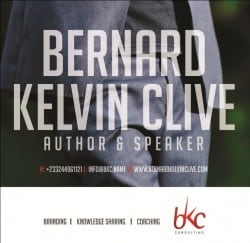
This is the edited transcript from Bernard Clive‘s interview with Sean Duffy, a brand strategist.
Bernard Clive: Welcome to another edition of your personal branding podcast. Insights and tips into branding, brand strategy, and social media. And one specific thing that we’re going to look at is what would you do if you share a name of a famous person or celebrity, whether good or bad. My expert here is a brand strategist, consultant, blogger, speaker on international markets, and founder of Duffy Agency an international digital marketing agency. Sean Duffy, welcome to the podcast show.
Sean Duffy: Thanks Bernard.
Bernard Clive: Let’s get into the background of Duffy.
Sean Duffy: My background, I started off in advertising in the States working with BBDO as a copywriter. I really enjoyed the job. My next job was in San Francisco where I worked as creative director for five years. That role got me more involved with strategy directing the other creatives and I became interested in it. Then I met a Swedish woman, and ended up moving to Sweden where I worked as creative director for the Lowe and Partners office in Stockholm. That’s when I really drilled into strategy. I was responsible for all our international accounts as creative director and brand strategist. In 2001 after 10 years with Lowe, I decided to open my own shop specialized in building brands cross-boder. I founded the Duffy Agency with offices in Sweden and Boston. We help aspiring international brands grow, particularly by applying digital strategy.
Bernard Clive: Ok great, so the interesting part of your story is your wife got you to relocate to Sweden.
Sean Duffy: Yes! I think Swedish girls are known for that. I wasn’t aware she would want to return to Sweden when we met, but when she told me I was in my 20s, in love, and it seemed exciting to go to Europe. My plan was to go for 3 years but of course that turned into a much longer commitment.
Bernard Clive: Almost Forever? [Laughs]
Sean Duffy: Yes, yes.
Bernard Clive: Ok great, now let’s focus on your work as a creative director and also as a brand strategist. Distinguish the difference between your work as a creative director for brands and now as a brand strategist.
Sean Duffy: As a creative director I would typically inherit the planning work, the strategy work, from someone else, usually from a brand strategist or from the agency planner. I would interpret what it meant for the communication and then work with my team to make sure that the concepts and communication that we created remained faithful to the strategy that we were given.
Imagine that you’re a sculptor and you’re making sculptures out of marble. You have a clear idea about the kind of a statues that you want to create. But the marble that’s being delivered to you isn’t quite good enough. It has flaws and cracks that make it crumble. That would make your work as a sculptor difficult and not very satisfying. Then one day you say, “Ok, I’ll just go up into the hills and see if I can carve out some marble that’s better.” That was my journey from agency creative to strategist. I sometimes felt the strategy wasn’t quite as nuanced as it could be, or lacked insights. That is really the key – insights. You need them to create really powerful communication.
So I got more interested in creating the strategies so that we could do better creative in the end. And that journey basically got me deeply involved in strategy and particularly the gaining of market insights. My agency helps companies grow, that’s our primary focus. Marketing communication is a stepping stone to growth, but the real driver of growth is strategy, and the driver of strategy is insight. The best place to get insights is to go out the field and meet the person that you’re trying to do business with, the target. So that was my backwards journey from agency creative into strategy.
Bernard Clive: Thank you for giving that phrase to me, I love it: The platform for growth is strategy, and the platform for strategy is insight.
Sean Duffy: Yes, a lot of businesses are focused on growth, especially if you look at a startups. Startups are defined by the need for growth. But if you ask them how they’re going to grow, they often fall back on innovation. You know they say, “We’re so innovative, that’s going to drive our growth combined with our passion.” But innovation doesn’t drive growth at all. It’s required for growth, for sure, but it doesn’t drive growth. Nor does passion. Passion drives other things that are really important, but it doesn’t drive growth. Sales can actually be distracting for premium brands.
A brand can have really good sales and still leave a lot of money on the table. Revenue on its own doesn’t indicate that you’re maintaining a premium pricing stance so you have good profits. It also doesn’t mean that you’re building brand equity so that the brand name itself is actually becoming more valuable over time. So for that kind of growth, for growth in the value of the company, the value of the brand specifically, it really comes down to strategy and again strategy as we see it, is based on insight. Hopefully, an insight that your competitor hasn’t arrived that yet. The freshest, most direct, most reliable place to get insights is from the target market themselves directly.
Bernard Clive: Great. Now let’s dig deeper. What is the role, the bigger role of the brand strategist for you Sean Duffy? What do you do for organizations and brands in your role as their brand strategist? That’s the first part. And the second part is why it is necessary for brands, companies or corporations to employ the services of a brand strategists. So let’s take the first part of the question.
Sean Duffy: Well, in one respect every brand is faced with the same challenge: I think Michael Porter defined it well when he said “Strategy is the answer to the question, how are you going to become and stay unique?” That is really, really hard for most brands. We always look at a company’s product on three levels.
First, you’ve got the core product, the core functionality of whatever it is that you’re selling. It could be a service or it could be a product. Take a cell phone, for example. The core function of a cell phone is to make telephone calls. When cell phones first came out in the early 1990’s that’s what they sold on, their core functionality: How well they made phone calls. Here in Sweden handset manufacturer Ericsson talked about the great engineering of their cell phones and how clear the signal was. After a while that core functionality is easily copied and, of course, in cell phones a lot of players were soon jumping in making cell phones.
The second layer out from the core functionality, as we see it, is value-add functionality. This could be a number of things. It could be your pricing strategy, it could be your design. In the case of design, Nokia realized that by the end of the 1990’s, “Hey the consumers really aren’t concerned about whether the phone works anymore. I mean it’s almost 2000, they understand the phones will work. What they really want now is a phone that doesn’t look so ugly, because the phone is actually something that reflects their own style. Nokia focused its marketing on that insight and pretty much blew Ericsson out of the water. They were first to realize that the customers had moved on from the core functionality on to the value-add functionality.
Around all that is the third layer, the value-add associations. These are intangible aspects that really have no effect on how well the phone makes calls or how it is designed. These are associations that are created through the brand strategy and communication itself. Sure, it’s very often that the brand strategy will always play a role, but it plays more of a role as the category matures. If you look at Coke and Pepsi, they’re pretty much only competing on their brand values at this point, the third layer.
So what we do is we try to find ways to differentiate brands, to make them unique and at the same time relevant to their customers and prospects. Relevance is super hard to achieve. The market’s always a moving target, it changes. So to remain relevant you always have to keep your hand on the pulse of the market and keep the brand updated with that. Then, of course, there is value: To make sure that you’re always delivering value. That’s where innovation can provide an advantage. I think Apple’s probably a good example of a brand that excels at constant innovation to keep us interested in their products and their brand.
Our role, in one sense, is to basically serve as a bridge between the customer and the senior management. It’s easy for senior management to fall out of touch with the people they sell to, especially for international brands. If we go out there into their markets, we can identify the wants and needs of the customer and the underserved areas of need. Then we can use these insights to help the brand adapt their offer to better serve the target. In that way, we act as a bridge between the market and the people who make decisions about the brand.
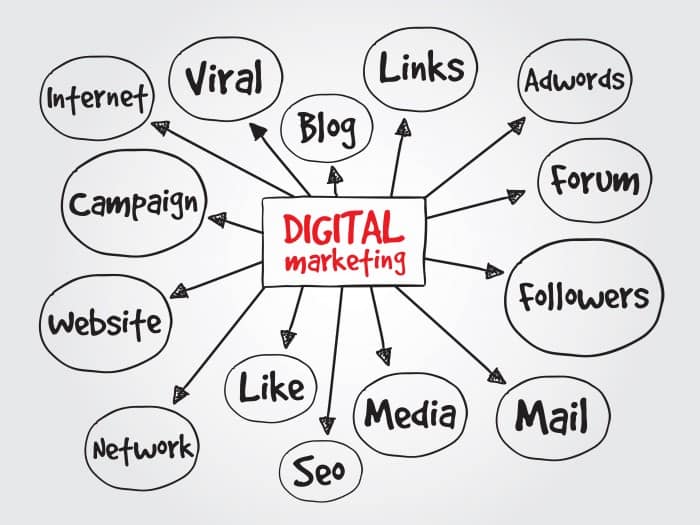
Bernard Clive: Okay, now let’s take it forward and imagine a company that is struggling to gain ground with their brand in the area of social media. Why would they need a brand strategist? Why would they employ us, and why do they need us?
Sean Duffy: Good question, I mean the executives inside the company know their product and their market better than we could looking in from the outside as brand strategists, right? That’s probably true. But it’s almost like a husband and a wife. The husband and wife might know their marriage and themselves and their partner better than anyone else in the world. But if they’re having marital problems, they are probably the least qualified to act as a marriage counselor. In fact, the very last person you want to act as a marriage counselor would be either one of them. They’re too close to the problem to actually solve it. What we provide as consultants, first and foremost, is perspective. We do see things differently, we’re not mired in history and other background noise. We just look at the market for what it is, we look at the product for what it is, and I think we provide a lot of clarity to the clients in that respect. Perspective is not often talked about, but I think it’s probably the most valuable aspect of the service that we deliver and why this type of work really needs to be outsourced to be effective.
I can tell you from my own experience with Duffy Agency. For the last year we have been in the process of repositioning our own brand. We’re experts in this. We have a whole team of people who do nothing but this sort of work all day. Yet, it was incredibly difficult for us to effectively diagnose and treat our own brand. Half way through the process we took our own advice and said, “Wait a minute, we’re too close.” So we called in an external brand strategist and it got so much easier. He states the obvious. We can recognize it right away, but it would have taken a lot longer for us to arrive at that ourselves. So as both a practitioner and a buyer of these services, I can highly recommend outsourcing brand strategy.
Bernard Clive: I see, it’s like with your own brand you’re too close for comfort, you’re still in the same environment, so close-minded, like you stated. When you get an external perspective into the team, it helps you shift perspective to position the brand properly.
Sean Duffy: Absolutely.
Bernard Clive: In the area of Social Media: How different is it using social media to position brands as opposed to more traditional means?
Sean Duffy: I think it’s different but based on the same underlying principles. “Social Media” is the internet. The evolution of the internet, in general, has created an opportunity for brands that is as big as the dawn of broadcast media, and strategic marketing in general. If you look at the promise that the internet holds, it’s the opportunity for any company of any size to actually market to billions of people. I think for large brands, that promise has been realized, the Cokes of the world, PepsiCo, McDonalds, those kinds of brands. I think they have leveraged that promise. I think for mid-sized companies, it’s a different challenge. They don’t have the resources that a Coke or PepsiCo, or McDonalds have. I think for mid-sized companies — and when I say mid-sized I’m talking, let’s say annual revenue between $10 million and a $100 million dollars a year — for them it’s a lot more of a challenge. I think they often lack the bandwidth inside their marketing department to take full advantage of the opportunity the internet offers.
As we see it, there are two new skills that will help fuel online growth for mid-sized companies today. The first is for mid-sized company to become extremely proficient online, and that’s not just with regard to their website, but also with social media (which we call online networking), content marketing, and, if you can sell online, e-commerce. The second skill set is in the area of cross-border marketing. I think as a category gets crowded and companies want to grow, an obvious place is to look at neighboring countries or even overseas for growth. Cross-border marketing is more than a matter of simply translating things into other languages. Having worked in this area now since 1991, I can say it is a separate discipline requiring distinct skills and expertise. I think those two skills together will help mid-sized companies realize the promise that the internet holds for getting their brand known and growing sales and brand equity through social media and the internet in general.
Bernard Clive: Great, will there ever be any company like Coca Cola in terms of their skill and ability to leverage social media or other online activities. Will we ever have other brands of the magnitude of Coca Cola?
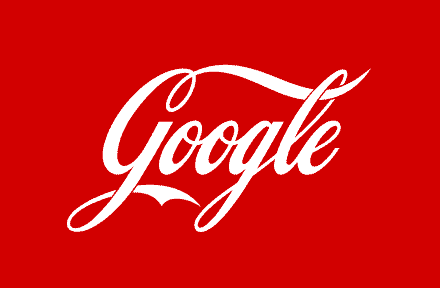 Sean Duffy: Yes, I think we already do. We have Google. Google is arguably consumed, if you will, more than Coke every day. So yes, I think we’ll see more mega-brands. I mean Alibaba is coming out of China now. There’s a lot of potential mega-brands in the works and they can come from anywhere, especially emerging markets like China. I think there was a lot of talk in the States when China started to awaken, about how China will become Westernized. I think there’s a much greater chance that the rest of the world is going to become Easternized. And some of those brands are coming out of China now. I mean there’s a better chance that some Chinese brands like Alibaba will make serious inroads into the US than perhaps some of the big US brands impacting China. But anyhow, yes, I think we will see a lot more Cokes. I think we’re already seeing them, even in the area personal brands. I mean, we’ve got individuals who become globally famous overnight for a variety of reasons. I think the internet will allow more brands of the magnitude of Coke at least with regard to the fame and awareness level of Coke to rise. There may even be more of them than we have in the past.
Sean Duffy: Yes, I think we already do. We have Google. Google is arguably consumed, if you will, more than Coke every day. So yes, I think we’ll see more mega-brands. I mean Alibaba is coming out of China now. There’s a lot of potential mega-brands in the works and they can come from anywhere, especially emerging markets like China. I think there was a lot of talk in the States when China started to awaken, about how China will become Westernized. I think there’s a much greater chance that the rest of the world is going to become Easternized. And some of those brands are coming out of China now. I mean there’s a better chance that some Chinese brands like Alibaba will make serious inroads into the US than perhaps some of the big US brands impacting China. But anyhow, yes, I think we will see a lot more Cokes. I think we’re already seeing them, even in the area personal brands. I mean, we’ve got individuals who become globally famous overnight for a variety of reasons. I think the internet will allow more brands of the magnitude of Coke at least with regard to the fame and awareness level of Coke to rise. There may even be more of them than we have in the past.
Bernard Clive: We’re talking about emerging brands using the internet, but what about traditional brands that have been developed with traditional mass media. How do they transition and use the internet to market?
Sean Duffy: Today, it’s hard to find a major brand that is not on social media but it’s fair to ask if it’s growing their business. Is it helping their business? A lot of times I fail to see the strategy behind what brands are doing online. I mean, having a Facebook page is almost mandatory now, for consumer brands anyhow. Having your company on LinkedIn and maybe having an Instagram account, that’s all great. But as we see it: If it’s not directly tied back to the growth of brand equity then it’s probably a waste of time and resources. You should be able to measure how it’s directly influencing brand equity growth and I don’t mean just sales. There’s a lot of steps before a sale happens. I mean there is awareness, and after awareness the target market has to understand what it is you sell and your category. And, of course, after they understand what you sell, then they have to find it interesting: “Why is it better than the other options I have in that category?” And after you’re done with that, they have to trust your brand. And once you get through that hurdle, then maybe they’ll try your product out, maybe they’ll actually spend the money to buy it. But then, of course, the beauty of the internet is that we don’t have to stop the transaction there. In the old days we had the sales funnel and that basically took the consumer on the top and then spat them out after the sale. But now since we have the internet we can keep a relationship easily going with that person to increase the probability of more sales.
So we want to look at what happens after they tried the product and then we want to have them believe in the product: “Wow, it did exactly what it said.” And then, after that, we want them to have an affinity with our brand and have them say, “Wow! This brand is into the same things I’m into. This brand represents what I’m all about.” And after that, we want to foster loyalty but we even want to go one step beyond that, and the internet allows us to do it, and that is to have them become advocates. That is getting the person who bought the product out there on the internet saying good things about the brand. The brand advocates increase awareness the way they always have through word of mouth, but now it’s digital word of mouth and it can influence thousands of people instead of just the neighbors. So that’s the cycle. We call that the Brand Equity Cycle and our whole mission is to run that and make sure all our online activities are contributing in some way to one of those nine points.
I think a lot of brands we see online today lack a clear strategy. You can see this in surveys of CMOs. One of the biggest issues for the last five years has been CMOs saying, ” Yeah, my brand is online but I really don’t have an encompassing strategy. We have little silos of efforts online but they’re not part of an encompassing digital strategy, and I don’t see how this is tying directly back to our marketing objectives.” I think that’s really the next frontier for a lot of these companies who are online today. It is to start to build a strategic foundation under what they’re doing to make sure that all the resources they have online are really working towards brand equity growth.
Bernard Clive: If not, you’ll lose out online because you have no strategy to grow brand equity. Just being present online is no longer enough. You need a strategy to help get a financial return back from the online investment.
Sean Duffy: Exactly! Without a strategy online, brands are just being social. Which, ironically, is not the point, not an end in itself, for any business who uses social media. It has to contribute to the business in a real way.
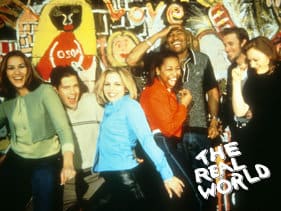
Sean Patrick Duffy (second from left) was a star in MTV’s Real World: Boston in 1997 before going into politics.
Bernard Clive: Yeah great. Now let’s look at a specific case. Say, for example, you share the name of a famous business celebrity, a politician, what do you do? Sean Duffy the politician, Sean Duffy the Brand Strategist. How do you manage that?
Sean Duffy: I’ve been living with that nightmare for several years now. I’m originally from Boston and there is a politician today named Sean Duffy who is also from Boston. He was in Boston when he became famous on MTV. I think he was in a reality TV program. Back then, when he was on MTV, the internet was just starting out and I was getting a lot of emails from young women who found him attractive and thought I was him. That’s how I became aware of him. Then he became a politician and the emails from the young women stopped, but his Google ranking grew. I noticed that if someone entered, “Sean Duffy, Boston” for instance, I was no longer on the first page of Google and began appearing further and further back the more famous he got. And yes, that is a problem. Luckily, I also rank on “Sean Duffy, Sweden” which helps me. So if someone can’t find me under “Sean Duffy, Boston” then they might try “Sean Duffy, Sweden.” Most people won’t have two countries they can go back and forth between. I think one area that may help is becoming associated with certain keywords that a famous person is not associated with. I would hope that if someone Googled, “Sean Duffy, Brand Strategist” that the politician would not come up before me. And I think that reflects the way that people search. Often they will throw on a second word just to narrow the search results, especially if it’s a name. My name is fairly common, so people would probably feel the need to throw in the second word to narrow down the search results. At that point, it’s up to the person who’s running their own personal brand to try and shape what that word will be so that they can get found easier.
Bernard Clive: One example I have is David Scott the politician. There is another David Meerman Scott who is a PR strategist. He uses his middle name to distinguish himself from the other David Scott. Sometimes you can optimise with a different terms to help you be found or sometimes you can use other tactics like adding a middle name.
Sean Duffy: That’s it, that’s a great strategy. I saw an article recently, I can’t remember if it was in Fortune or some magazine, where they mentioned how a study showed that people who use their middle initial are more highly regarded by people than people who don’t use a middle initial. You are automatically assumed to be smarter because you use a middle name or initial. But you’d really have to work pretty hard to get people to routinely use your middle name in search and use it online so it would rank in search in the first place. I have a friend who had that problem. His name was Bill and he was confused with someone else, so he changed his name to Will, they’re both derivatives of William. But it was really hard for me to get used to calling him Will, after I’d been calling him Bill for 15 years.
Bernard Clive: Especially if the other party is has messed up with the name and created a bad reputation for that name. That’s difficult to really get that out of the system.
Sean Duffy: Exactly. Yes, that would be horrible.
Bernard Clive: As we wrap up, give us your three best practices of brand tips.
Sean Duffy: We have an acronym here at the Agency we call SMARTS (and I hope I can remember them all). We use this when someone here is starting up a project. We want, first of all, to make sure that there’s a written Strategy behind the project, so “S” is for Strategy. Next, we want to make sure that results are being measured, so there’s “M” for Measurement. If you can’t measure it, you can’t really manage it very well. We also want to make sure that there’s one person accountable for every project, so it’s not just the team sharing responsibility, there has to be a person. Where does the buck stop? We want to be sure that someone feels the responsibility to really drive the project. So “A” for accountability. We want our process and activities to be repeatable. Repeatable really means the ability to document the process so that it can be played out again and it’s not just being made up as you go along. That’s “R,” and then “T” is for timeline. We don’t want activities or processes for brands just floating in space. If the client says they want want to achieve a specific objective then we need to define “when.” You increase the chances of success when you tether objectives to a timeline. The last letter is “S” because we we want to make our solutions scalable so that when growth does happen, and the brand starts to grow, the process doesn’t have to be reinvented. Solutions can scale with the business so you’re not caught in a vulnerable position. That’s SMARTS, S-M-A-R-T-S. For us, that’s the code we live by on a day-to-day basis. The other best practice we use is, “Don’t guess. Ask.” Brand strategies are based on assumptions. Any business plan, any decision you make will be based on assumptions. The success of the strategy will depend on the validity of those assumptions, so best not to guess about those assumptions but just go out in the field and ask the target market. Find out first-hand where the target mindset is at, what options are available, and what’s going on in the market.
Bernard Clive: OK, great Sean. Where can listeners get in touch with you and all the services you have to offer.
Sean Duffy: They can reach us online at www.duffy.agency. I can also be reached by email at sean[at]duffy.agency.
Bernard Clive: Ok Sean, I always ask this to my guests. What would be your big advice to the world?
Sean Duffy: My big advice to the world? Where do we start with that, I mean, given the state of world today? Personally, I think good advice to the world would be to focus on education. I think, for all of us, there is room for improvement here. It means we should always be learning and we should always be promoting learning in other people around us and sharing our knowledge. So I think that would help make the world whole lot nicer.
Bernard Clive: Ok, Great Sean Duffy. Thanks for this and I want to recommend my books on Amazon, visit Amazon.com to get all my 15 class books today. I recommend this book on personal branding that is “Rebrand; The Ultimate Gauge for Personal Branding.” Get one today and grab a copy for someone else.
Click and read more about the challenges in international marketing.
Like this post? You'll find more marketing insights in my new book: International Brand Strategy: A guide to achieving global brand growth, now available from booksellers globally. Order your copy here.

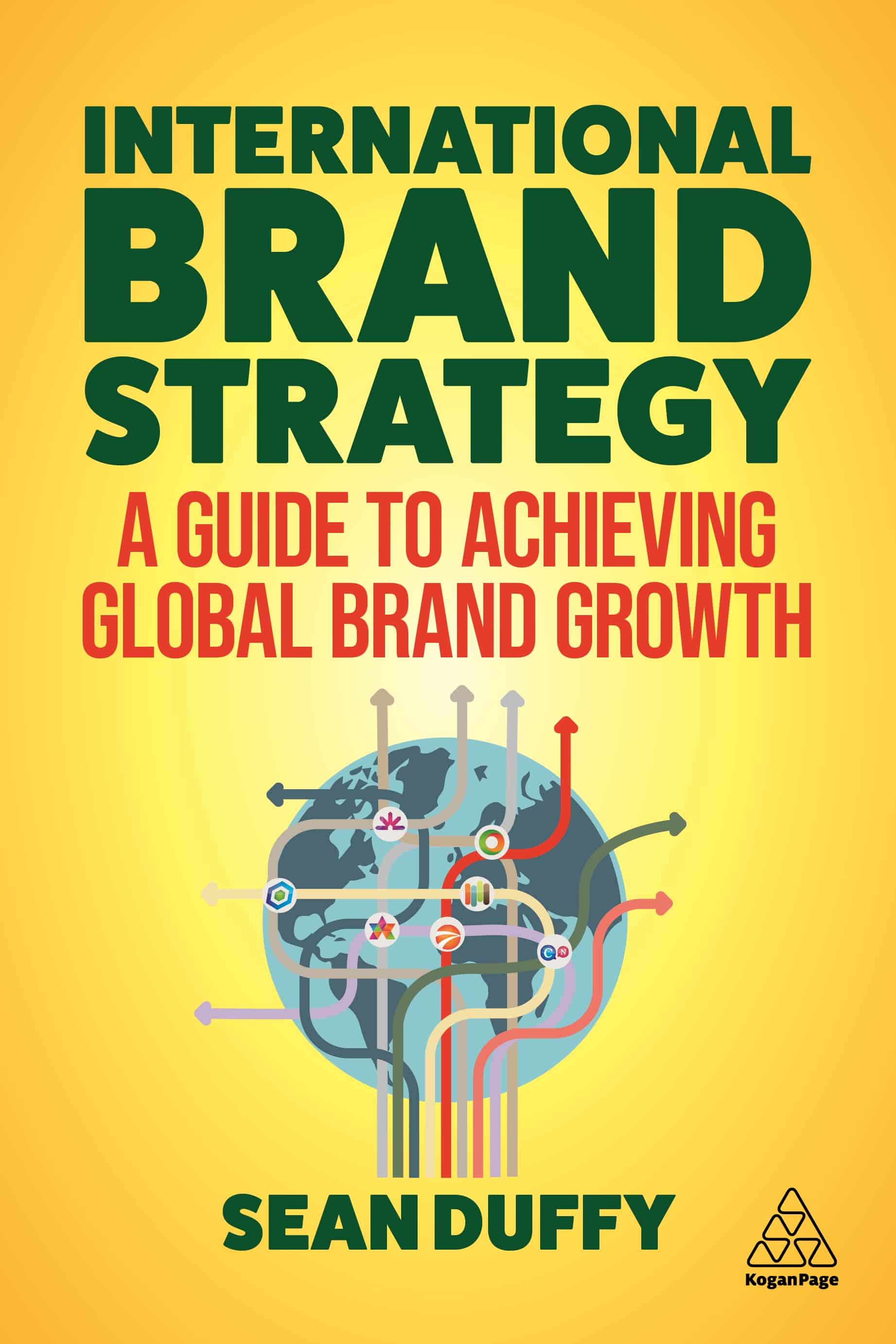

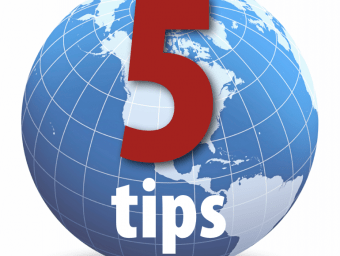
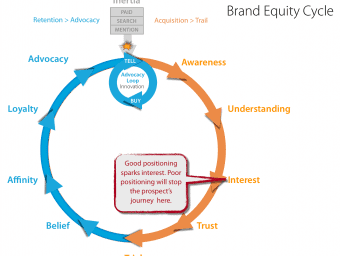


One replay
Nice post about brand strategy. Thanks for sharing this.